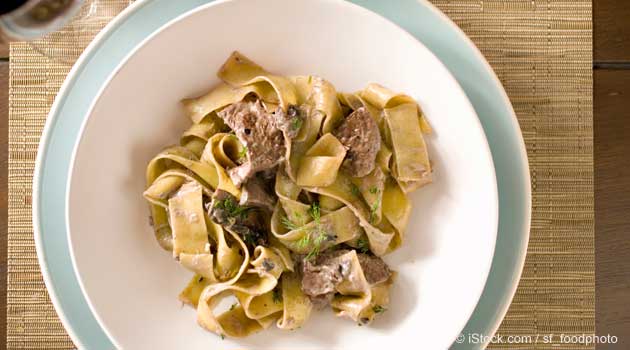
April 09, 2016
Story at-a-glance
- Your ears are self-cleaning and earwax will migrate out of your ears naturally
- Cotton swabs are not meant to insert into your ears and doing so can damage your eardrum, skin or ossicles
- One of the primary risks of cotton swabs is they can push the earwax into the deeper part of your ear canal leading to impaction
By Dr. Mercola
Is cleaning out your ears with cotton swabs part of your regular hygiene routine? If the answer is yes, you’re certainly not alone. But, contrary to popular belief, cleaning your ears isn’t only typically unnecessary; it’s potentially dangerous.Your ears are unique in that they’re a self-cleaning part of your body. If left alone, the earwax will migrate out of your ears naturally. There’s no need to forcefully remove it.Further, sticking any foreign object in your ear poses the potential for injury, especially if the thin skin of your ear canal is broken or the ossicles (bones of your middle ear) are damaged.Boris Chernobilsky, MD, assistant clinical professor of otolaryngology at the Icahn School of Medicine at Mount Sinai in New York City, told Time:1“In the worst-case scenario, damage to the ossicles can result in a leak of fluid from the inner ear … This would result in severe vertigo and potentially a permanent hearing loss.… If skin is broken, it can get infected and lead to a painful external ear infection—swimmer’s ear, in lay terms.”
Are You Making These Five Ear-Cleaning Mistakes?
Dr. Chernobilsky shared five common habits that may be putting your ears at risk.21. Cleaning Your Ears RegularlyYou probably don’t need to clean your ears at all, let alone daily or every other day. Known technically as cerumen, earwax is made mostly of dead skin cells but is also contains lysozyme, an antibacterial enzyme, fatty acids, alcohols, cholesterol and squalene.3Earwax isn’t a substance you need to guard your ears against; it’s actually beneficial and provides protection, lubrication and antibacterial properties. As explained by the American Hearing Research Foundation:4“Too little ear wax increases the risk of infection … at least ten antimicrobial peptides are present in ear wax preventing bacteria and fungi from growing.”Further, the skin in your ears grows in an outward direction in order to move earwax and skin debris out of your ear canal. The removal of earwax is also helped along by movements of your jaw (talking, chewing, etc.).Once it reaches your outer ear it will simply fall out or be removed when you shower or bathe. You can use a washcloth to gently remove wax from your outer ear, if necessary, but you needn’t clean your ear canal.In an interview with Common Health, Dr. Steven D. Rauch, professor of Otology and Laryngology at Harvard Medical School, explained:5“The skin of the ear canal migrates outward like a conveyor belt and pushes the wax out, so by and large, ears are self-cleaning. If you leave your ears alone, they’ll leave you alone.In some cases, because of the shape of the canal or the consistency of the wax, you need someone to clean it, but routinely, that’s not the case, and you’re thwarting the normal conveyor belt mechanics when you plow the stuff down into the deep part of the canal.”2. Inserting Cotton Swabs in Your EarsCotton swabs are not meant to insert into your ears and doing so can damage your eardrum, skin or ossicles. The cotton head of the swab could also potentially pop off and get stuck in your ear canal, which would require professional removal.Under normal circumstances, earwax is only produced in the outer one-third of your ear canal.One of the primary risks of cotton swabs is they can push the earwax into the deeper part of your ear canal, near the eardrum. As the American Academy of Otolaryngology – Head and Neck Surgery Foundation (AAO-HNSF) noted:6“When a patient has wax blockage against the eardrum, it is often because he has been probing the ear with such things as cotton-tipped applicators, bobby pins, or twisted napkin corners. These objects only push the wax in deeper.”When earwax is pushed deep into your ear where it doesn’t belong, it can bring fungus, bacteria and viruses from the outer ear into the inner ear, increasing the risk of infection. It can also block your ear canal, leading to hearing loss, or even cause a ruptured eardrum.It’s a vicious cycle, too, because the more you rub your ears with cotton swabs, the more histamine will be released, which makes your skin irritated and inflamed. This, in turn, may make you want to insert a cotton swab again, leading to additional dryness and irritation.73. Inserting Any Pointy Object in Your EarsInserting objects such as bobby pins, long fingernails, or sewing needles into your ear involves many of the same risks of cotton swabs, and the pointy tip could cut and damage your skin quite easily. According to AAO-HNSF:8“ … attempting to remove earwax with cotton-tipped swabs, bobby pins, or other probing devices can result in damage to the ear, including trauma, impaction of the earwax, or even temporary deafness.These objects only push the wax in deeper, and can block the ear canal entirely.”4. Ear Candling - Playing With FireEar candling involves putting a hollow cone-shaped device or “candle,” typically made of linen or cotton soaked in wax or paraffin, in your ear canal and lighting it on fire. Proponents and practitioners of candling maintain the procedure removes wax and other impurities from your ear.It’s said that as the smoke moves down the candle into your ear and back out again a vacuum is created that pulls out wax and other debris from your ear into the hollow candle. Experts, however, typically warn against this procedure and I wholeheartedly agree.Dr. Chernobilsky told Time, “I have seen eardrum perforations and burns from people’s hair catching on fire.”9Further, research published in the journal Laryngoscope measured this pressure and concluded that no negative pressure was created.10 The U.S. Food and Drug Administration has also warned against ear candling and notes that it’s been linked to the following risks:11
Fire Burns to your face, ear canal, eardrum and middle ear Injury to your ear from dripping wax Plugging of your ears by candle wax Bleeding Perforation of your eardrum 5. Rinsing With a SyringeRinsing with a syringe can be safe, but if you neglect to dry your ear when you’re done you could end up with swimmer’s ear. Generally, there’s no need to rinse your ears with a syringe.
Is Using Cotton Swabs Really That Dangerous?
Many people have no intention of giving up their cotton-swab habit, even after recognizing the risks. The ear is an erogenous zone, after all, and cleaning the ears with cotton swabs is satisfying for many.Others like to use swabs to dry their ears out after a shower or bath or still feel the need to clean out earwax, even though it’s not necessary. So if you keep using cotton swabs in your ears, are you guaranteed to do damage? Probably not, but there’s no way to know whose ears might end up damaged and whose will not. Dr. Steven D. Rauch, the Harvard Medical School professor, explained:12“Lots of people stick Q-tips in their ears. Some of them do harm by doing that. They either push the wax down deep where it can’t clean itself out and they have to get professional care, or they traumatize the canal so that it bleeds or hurts, or they make little scratches and bacteria get in and cause infection.So it’s a well-known mechanism for causing ear trouble, but that’s a numerator with no denominator. Say I see 50 people who have Q-tip issues, but I don’t know how many out there use them and never have a problem. I don’t know whether it’s 50 out of 75, or 50 out of 5000 users. It’s impossible to know how big the problem is.And it’s not a secret. It’s not an unknown problem. Everybody in the medical profession, every primary care doctor and ENT specialist, knows this. I think a lot of the public knows it too, but the public does a lot of things that are not good. They ride bikes without helmets and don’t put on seat belts and drink giant soft drinks.”
A Safe Way to Remove Earwax
An ear, nose and throat (ENT) doctor, or otolaryngologist, can remove earwax using a special suction, miniature instruments and a microscope. If your eardrum is perforated, manual removal by a physician is recommended, however in most other cases you can clear earwax blockages at home.The simplest way to do this is to first soften the wax by placing a few drops of olive oil, coconut oil or water in your ear. Then, pour a capful of 3 percent hydrogen peroxide in each ear to flush the wax out. It’s worth noting that using plain sterile water, or a sterile saline solution, to soften earwax works just as well as oil or over-the-counter eardrops.As an aside, the hydrogen peroxide trick (pouring a capful of 3 percent hydrogen peroxide in your ears) also works remarkably well at resolving respiratory infections, like colds and flu. You will hear some bubbling, which is completely normal, and possibly feel a slight stinging sensation. Wait until the bubbling and stinging subside (usually 5 to 10 minutes) then drain onto a tissue and repeat with the other ear.It’s also worth noting that frequent excess buildup of earwax can oftentimes be traced back to an omega-3 deficiency. The remedy for this is quite simple: eat more omega-3s or take a high-quality animal-based omega-3 supplement like krill oil. Good dietary sources of omega-3 include sardines, anchovies and wild-caught Alaskan salmon.


